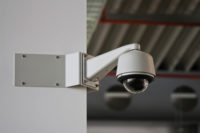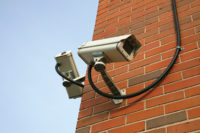In the middle of the physical security convergence industry are the open platform software providers making significant contributions toward the adoption of IP-based physical security solutions. These companies aren’t the largest in the industry, yet by providing innovative software features they meet the customer’s needs and unlock the innovation of the hardware manufacturers. Without these software features and integration services, customers would not likely adopt IP cameras over analog security video systems. This innovation is the fuel of the new physical security economy.
New Economy
The new economy is based upon software and service business models that contribute substantially to a company’s bottom line. The IT industry went through a very similar shift in the late 1990s, which drove hardware margins into the high single digits. This new economy is disrupting many of the analog or DVR hardware-based business models in both subtle and dramatic ways. The predictable signs of this have been both declining analog and DVR security video growth, and a steady increase in growth for the future of networked surveillance and open-platform software. Declining growth for the traditional security market has sparked consolidations in the analog security video camera industry. Consolidation is used to simulate growth and buy time for companies to reposition themselves for future changes in the business climate.
Integration Services
As a part of this new economy, the software providers enable integration services, which bind together many different systems, including surveillance, networking, servers, storage, access control and other building systems. This ultimately results in a highly integrated and more advanced physical security solutions. This scenario is the reason why large companies like ADT will buy smaller software companies like Proximex. The Proximex acquisition propels ADT into a good position relative to the new physical security economy, and provides ADT and its channel partners additional integration services options. These types of acquisitions by traditional analog companies will continue because of the difficulty in innovating and changing from within their existing business structures.
Licensing Models
At the center of the new physical security economy are the licensing models of software solutions. These models are tied to all aspects of the technologies used to facilitate convergence. From camera licensing tied to MAC addresses, to operating system and application registration requirements, licensing models are the fuel to the new economy. This is how we put a price on all of the value the software industry provides, and for the most part, this is a very flexible way to grow the industry. Today, software license prices range from $25 to $25,000 dollars per device (based on the type of device and the system integration itself), and generally represent a fraction of the acquisition cost of new solutions that are typically less than 15 percent of a new systems’ purchase price, and 50 percent of a system upgrade. However, a key shift in the new physical security economy will be ongoing software product maintenance fees, which can be as high as 20 percent per year.
In the Middle
Open software providers sit between the surveillance camera equipment and everything else, literally in the middle of converged solutions. This vantage point is truly unique, leading the software providers to support many types of third-party solutions and many types of partners. These new partnerships create new certifications of product integrations. For evidence of this trend, look at Milestone Certified Solutions and Axis Compatible Applications, which are setting the standard for the new physical security economy. Being in the middle also means they work closest with the end customers, because the software interfaces directly with the operators. Being in the middle is clearly a good place to be in today’s changing industry.



